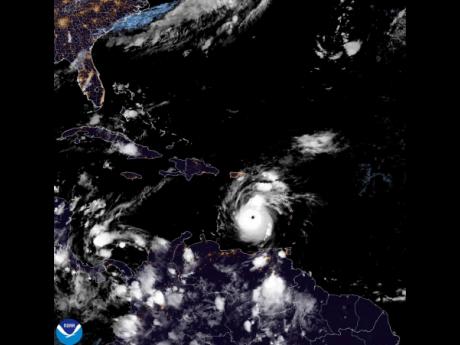Editorial | Beryl, SIDS and the climate
If we have been lucky, Hurricane Beryl tracked further south of Jamaica, saving the island from the brunt of its fierce winds and driving rain.
But with or without that fortune, Beryl is a reminder of three realities that face small island developing states (SIDS) like Jamaica and its neighbours in the Caribbean: they have to be constantly prepared, or be preparing, for climate-related natural disasters; global warming is real, man-made and wreaks havoc; and SIDS may have to be more aggressive in taking matters into their own hands, fashioning mechanisms to finance their resilience against climate change.
One of these, possibly, is creating the Development Bank for Resilient Prosperity (DBRP) that was championed by the Antigua and Barbuda Prime Minister Gaston Browne at the SIDS conference in St John’s in May.
The immediately glaring fact about Beryl is the significant destruction it left in the southeastern Caribbean, especially on the island of Carriacou, which is part Grenada. Carriacou is 47 kilometres north of the mainland. It is part of The Grenadines chain that is shared with St Vincent, which was also badly hit by the storm.
But there are notable unique factors about Beryl. First, last Friday (June 28) Beryl emerged as a tropical depression in the Atlantic. Two days later it was a hurricane, breaking the record far east of the Caribbean for a hurricane to develop.
It was also the earliest to become a Category 4 storm on the five-point rating on the Saffir-Simpson wind scale. That meant that its sustained winds reached 135 to 156 miles per hour (209-251 kilometres per hour). The earliest previous Category 4 hurricane was Dennis in 2005, on July 8, and the earliest Category 5 was Hurricane Emily on July 16, 2016. Beryl also break that record.
NOT SURPRISED
Scientists weren’t surprised by Beryl’s quick bolt out of the blocks. Indeed, they had projected an active season, with an above average number of, and more intensive hurricanes.
For instance, the 20 named storms in 2023 last year was nearly one-and-half times the annual average, making 2023 the fourth most active season in over seven decades. Seven of those storms became hurricanes.
This year, the meteorologists predict between 17 and 25 named storms. Eight to 13 of them are expected to develop into hurricanes, meaning that they will reach wind speeds of at least 74 miles, or 119 kilometres, per hour.
Between four and seven of the projected hurricanes are expected to reach Category 3, which Beryl has already surpassed.
The environment is favourable for big, angry storms. This is another recording-breaking year of high temperatures, causing hurricane-inducing warmer waters in the Atlantic, the Caribbean Sea and the Gulf of Mexico. The situation now is what, in the old days, the experts say, would be the case in the peak hurricane month of September.
This situation is exacerbated by the onset of La Niña, ocean currents that are less favourable to vertical wind shear that tend to break up storm patterns.
That the planet is hotter didn’t just happen. It is the result of human beings emitting greenhouse gases (GHG) (mainly from the burning of fossil fuels and methane from the flatus of animals raised for food) into the atmosphere.
SIDS, which produce only one per cent of the world’s GHGs, face the greatest danger from climate change. Rising seas threaten their coasts and they have little space to retreat inland. Mostly, too, their economies depend on their coasts.
But already highly indebted SIDS have little resources with which to finance climate change mitigation and adaptation. And what has been promised by developed countries is insufficient for their needs – and has been slow in coming.
At the same time, developed countries and other major polluters don’t live up to their commitment to keep the rise in Earth’s temperature to below 1.5 degrees Celsius by the end of the century, compared to the 1850s. Scientists fear that target, on current trajectory, could be surpassed within a decade.
LOGIC TO THE IDEA
Facing the prospect of being left up a creek without a paddle, the advocates of the DBRP say it could be financed by developing countries leveraging their natural resources, including their capacity for green energy, forests and seas, for capital.
This, on its face, seems a difficult, complex undertaking. However, given the circumstances within which SIDS find themselves, there is logic to the idea. It should be seriously pursued and stress-tested and given a real chance of success.
What the SIDS firmly need on the agenda is a debt sustainability initiative, aimed at debt serving to manageable levels, thus allowing them space to invest in climate resilience projects. That, too, must be worked at.
At home, though, Jamaica must do the small, inexpensive things to mitigate many of the immediate effects of disasters on communities.
Floating catastrophe bonds is, of course, good. But those pay after the fact – and after people’s lives have been made miserable.
The Government can, for instance, lessen the impact of heavy rainfall by regularly cleaning gullies and drains, thus lessening the likelihood of flooding. This shouldn’t be done only at hurricane season, or when a potential disaster, like Beryl, is barrelling down on the island.

